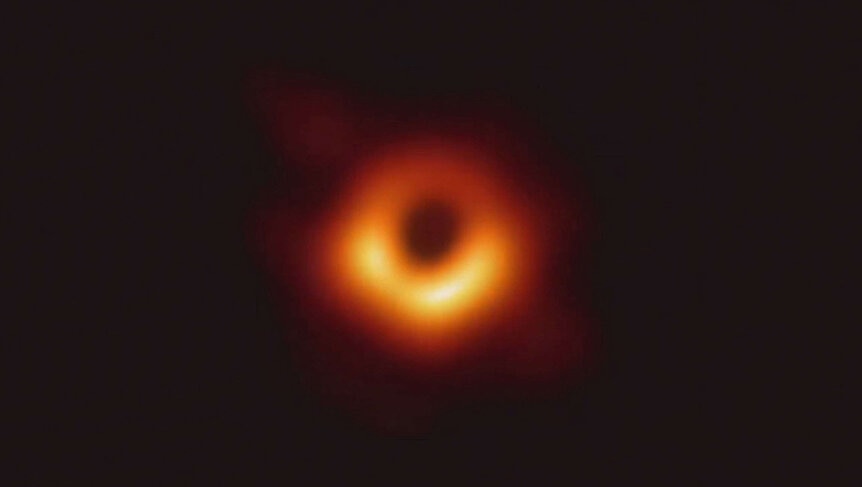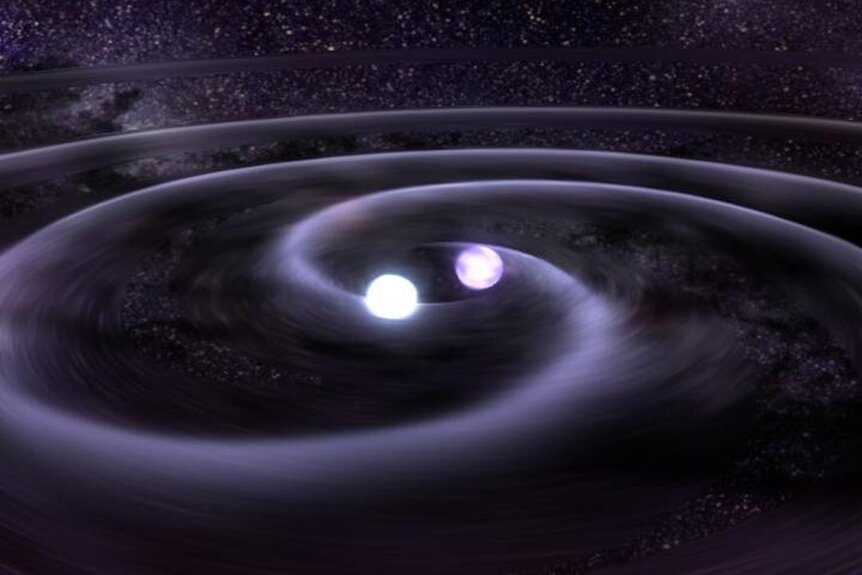Create a free profile to get unlimited access to exclusive videos, sweepstakes, and more!
Did J. Robert Oppenheimer Discover Black Holes? Sort of, But Not By Himself
Oppenheimer played a part in the discovery and understanding of black holes before the atomic bomb.
The name Oppenheimer has become synonymous with the atomic bomb, but J. Robert Oppenheimer was a well-rounded physicist with his hands in all sorts of mathematical pies. Before the Manhattan Project so boldly depicted in Christopher Nolan's Best Picture-winning biopic, Oppenheimer and others did pioneering work on the discovery of what they called dark stars, and what we now know as black holes.
While Oppenheimer has been called one of the fathers of the black hole, the truth of just about every scientific discovery is more complicated that just one person with a eureka moment. Unlike black holes themselves, discoveries like these aren’t made in a vacuum.
Who First Discovered Black Holes?
That depends on how you define discovery. If we’re talking about the first direct image of a black hole (or at least the hot accretion disk around it), then that only happened in 2019 when the Event Horizons Telescope imaged a supermassive black hole at the center of the galaxy M87 (shown below).
If we go back half a century, we’ll get to the first detection. Astronomers in the ‘60s detected cosmic X-rays coming from the black hole Cygnus X-1. They couldn’t see it, but they knew it was there, and they knew it was possible because astronomers had been seriously talking about the possibility of black holes for decades.
For More on Black Holes:
Black Holes “Burp” After Gobbling Up Stars
“Scary Barbie” Black Hole Slurps Up a Star Like Spaghetti
Biggest and Hungriest Black Hole Ever Discovered Eats a Sun a Day
In fact, the idea of a dark star or black hole dates back to at least 1783, when little-known rural clergyman and prolific scientist John Michell thought them up. He was thinking about light escaping from the surface of a star and being pulled back toward the star by gravity. He wondered what would happen if you kept increasing the mass of a star until the escape velocity needed for light to get away was greater than the speed of light. While he didn’t get all the details right, Michell proposed an object so gravitationally dense that not even light could escape it.
The idea didn’t really catch on until Einstein’s General Relativity revealed the mathematical possibility of black holes. Even then, Einstein himself wasn’t convinced that they could actually exist in the real world. Over the last century, countless other scientists from Schwarzschild to Hawking have contributed to the proposition, discovery, and study of black holes, and one of those scientists was J. Robert Oppenheimer.
Oppenheimer’s Contribution to the Discovery of Black Holes
In the first few decades of the 20th Century, physicists were giddily exploring the uncharted domain of atomic physics. The machinations of the atom and our emerging ability to understand and manipulate them were the scientific questions of the day. That fascination with the atom would eventually lead Oppenheimer to the top spot at Los Alamos, but before that he spent some of his time thinking about deep space.
Curious how atoms might behave in the most extreme environments imaginable, the deep hearts of massive stars, Oppenheimer and his contemporaries began imagining more and more massive stars, just like Michell did. Taking the question of gravitational influence a step further, they wondered why massive stars don’t just collapse under their own weight.
In the heart of a star, intense heat and pressure fuse atoms of hydrogen into helium and release an incredible amount of outward radiation pressure, not to mention heat and light. It’s that outward pressure which keeps stars in balance, rather than a state of perpetual collapse. As stars burn through their fuel, their cores do start to collapse. They get hotter and kick off fusion of helium and heavier elements, as long as the star is massive enough.
Eventually, massive stars can’t contract anymore. Their atoms are so tightly packed that they can’t move and the star settles into a relatively stable state. Even though gravity is still crushing inward, the star can’t get any smaller because of something called electron degeneration pressure. Basically, there’s nowhere for the electrons to go. You’ve packed as many atomic sardines as you can into the can and you can’t pack them any more tightly. But Oppenheimer wondered what would happen if the core were so massive that even these quantum pressures couldn’t prevent collapse.
He and colleagues sought to find the limit at which a neutron star could no longer sustain itself and must collapse. That limit became known as the Tolman-Oppenheimer-Volkoff (TOV) limit. Later, Oppenheimer co-authored an early paper on black holes titled “On Continued Gravitational Contraction.” In it, authors Snyder and Oppenheimer argue that a star of sufficient mass will collapse indefinitely once its fuel has been exhausted.
The paper was a landmark in our understanding of black holes, but it’s a subject Oppenheimer didn’t really revisit. For some reason, his thoughts and work were otherwise occupied during and after his time at Los Alamos.
Christopher Nolan’s award-winning biopic Oppenheimer is available now from Universal Pictures.
































